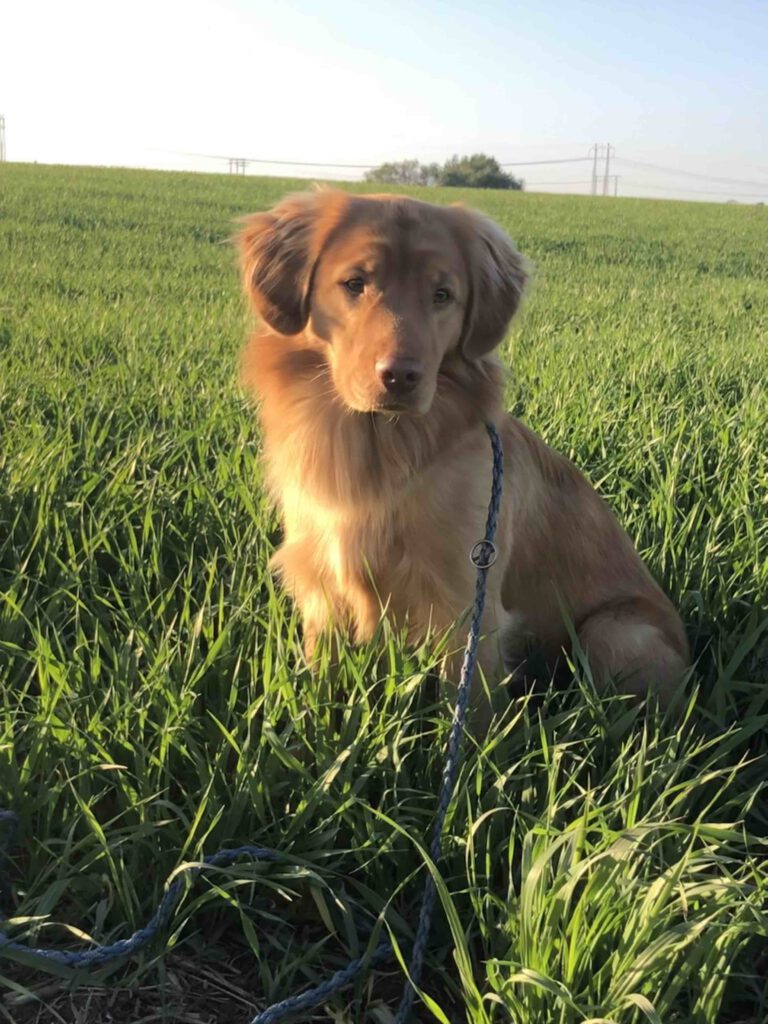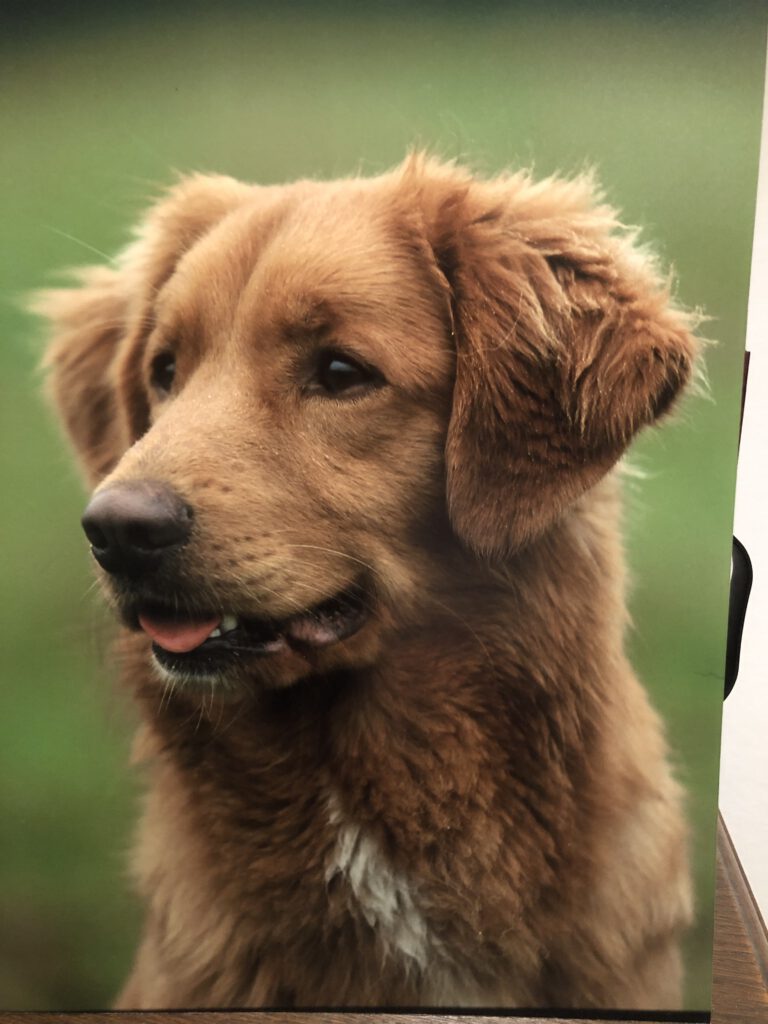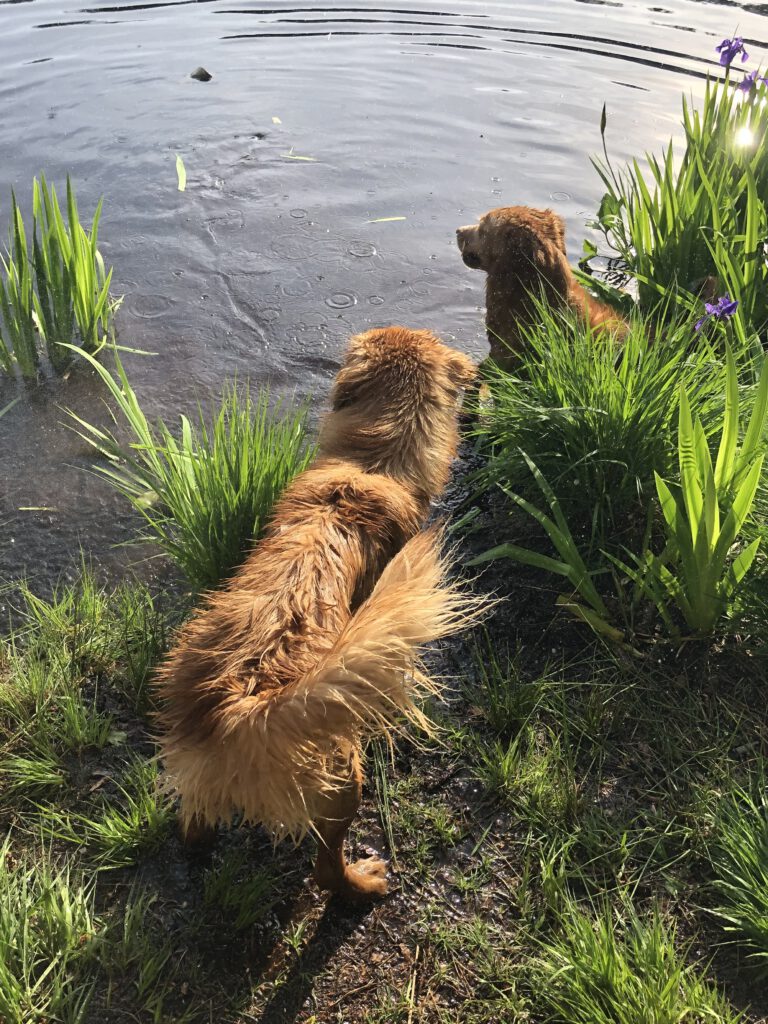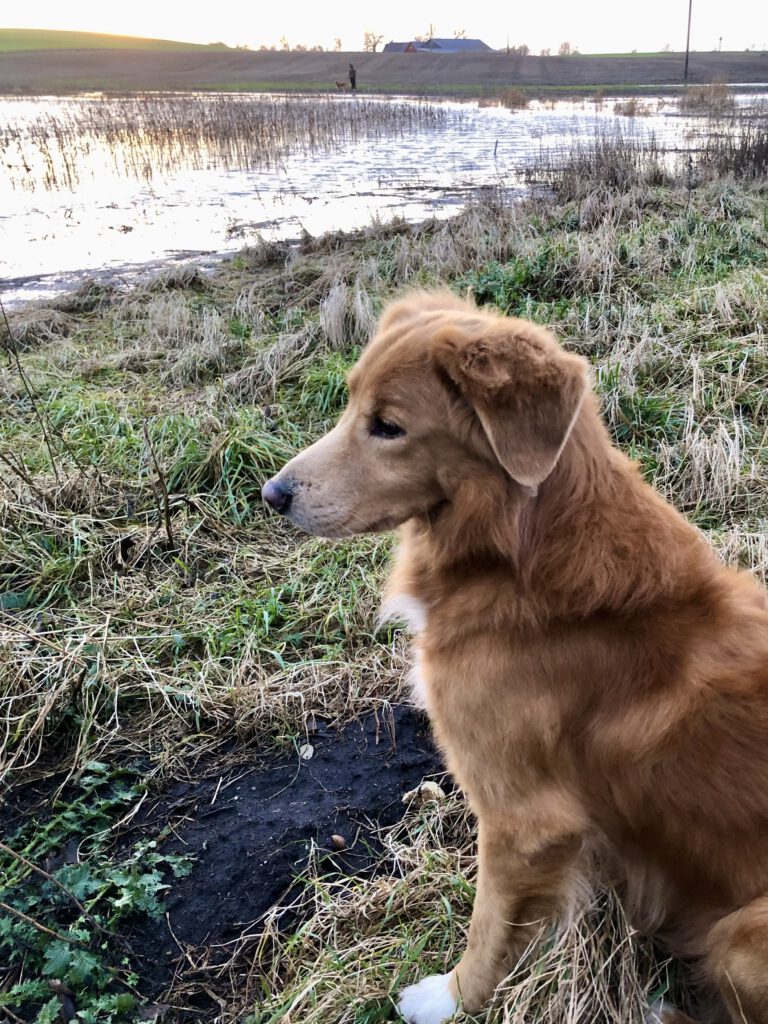Tolling tests
From the days when the first breeds of hunting dogs were born and the documentation of pedigree started, dog owners and hunters started to compare and compete with their dogs.
The first kennel club with a registered pedigree, The Royal Kennel Club, was established in England in 1873, and the first ” Code of Rules for the guidance of Dog Shows and Field trials” were decided the following year.
Through the many years since then, there has been more and different field trials and hunting tests established, depending on the types of hunting dogs and the different styles of hunting with dogs.
A retriever is not tested in the same test as a pointer.
A spaniel is not tested at the same test as a dachshund.
The obvious solution: different tests and hunting trials for the breeds, with their roots in the same hunting tradition and background.
But the road to the tolling tests took time.

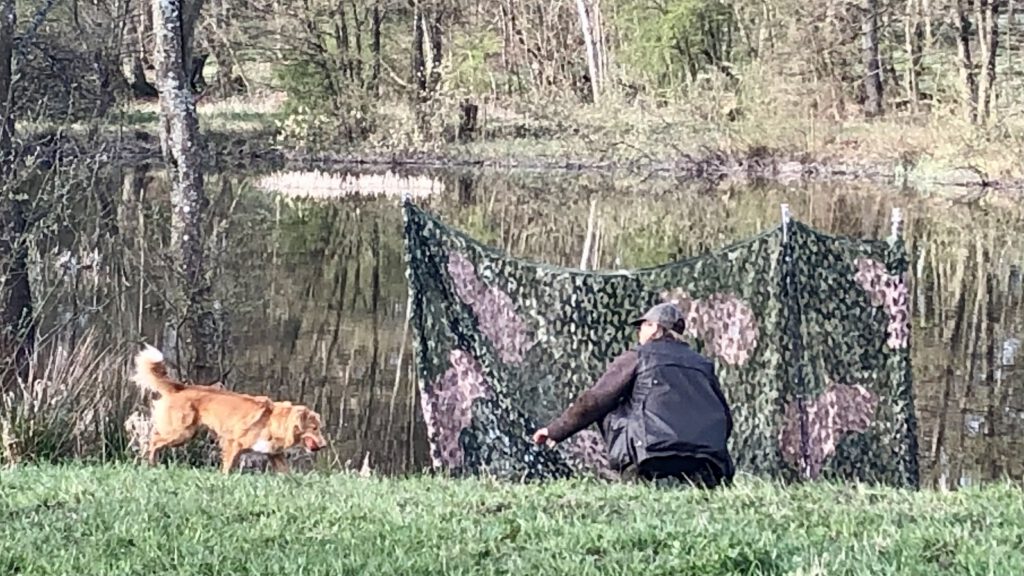
Competition or evaluation.
During the 20th Century the trials and tests for the retrievers took two different directions – The British tradition and the Continental tradition.
The retriever field trials on the British Isles are still held on country estates and other areas, with several shooters and live birds, often pheasants or partridges, with several dog under judging at the same time and the participating dogs gets eliminated during the hunting day until there is only one dog left, the winner.
The continental way of retriever tests focuses on the evaluation of each dog individually, with written protocols and fixed prize levels, and with cold game (rabbits, hares, ducks, pheasants, crows, gulls that has been hunted at a previous time). Several dogs at the test can get the highest prize level. In the Nordic countries these retriever tests are the dominant and most common way to evaluate retrievers.
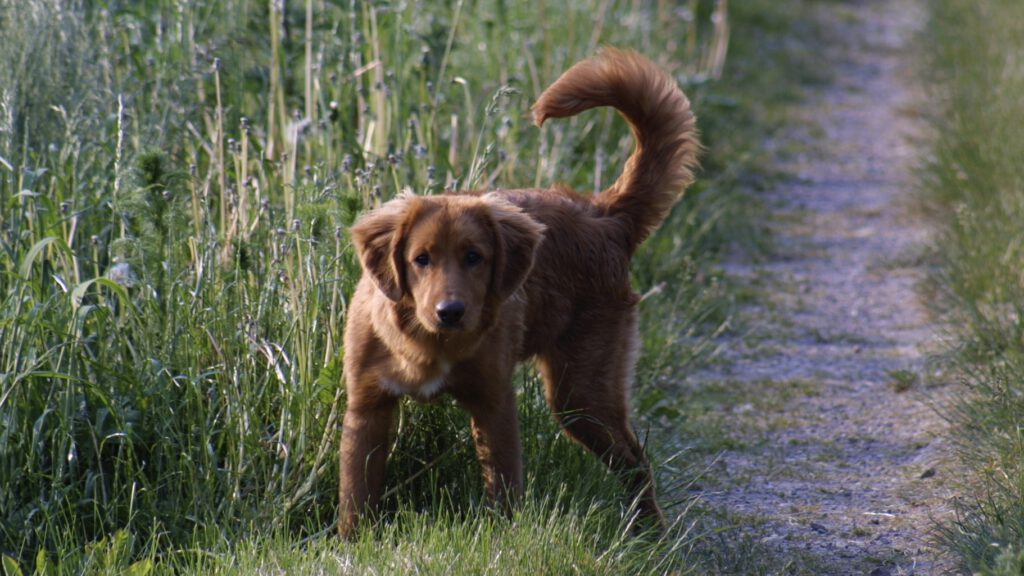
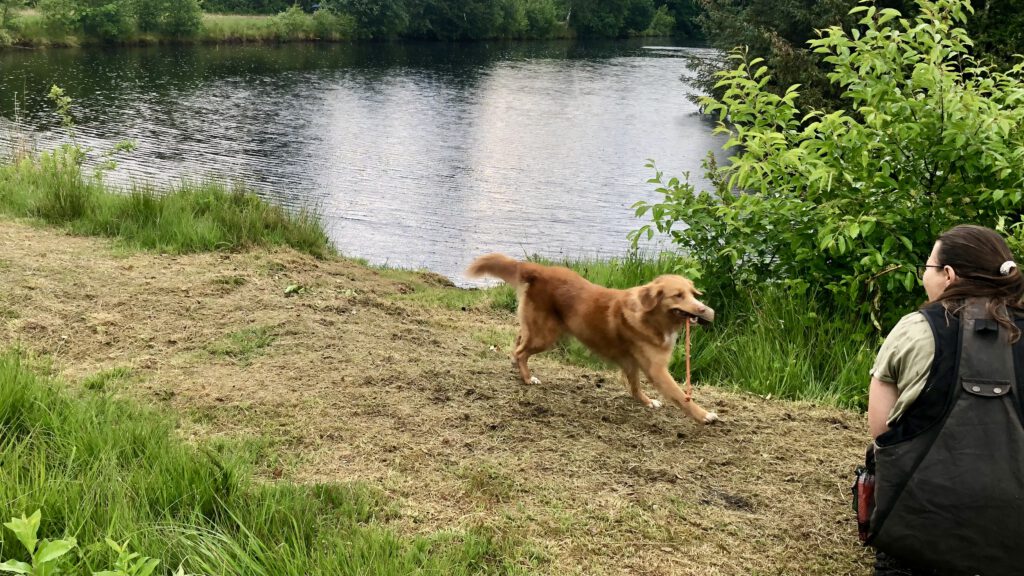
Is the Nova Scotia Duck Tolling Retriever actually a retriever?
The old books and texts paint a clear picture. The red and white dogs that were used in the tolling hunts in the Atlantic parts of Canada and New England were called Little River Duck Dogs, or Little Red Duck Dogs, or Yarmouth tollers, or Tolling Decoy Dogs.
The word “Retriever” was added later, in 1945, when the Canadian Kennel Club recognized the dogs as a purebred breed with its set standards, measurements, and appearance. Retriever was probably used as a description of the work the tollers were doing after the shots, retrieving the birds, but the term didn´t cover the work before the shots could even be fired. (Actually the term “spaniel” covers a group of hunting dogs that work both before and after the shot.)
The other more common retriever breeds – Labrador, Golden, Flat-coated & Curly-coated – are all British retriever breeds and has been formed by the big estate hunts they were bred for – working with several hunters and handlers and several other dogs, inactive and “invisible” before the shots, controlled in every moment of the hunt.
The toller (and the Chesapeake) on the other hand are American breeds from totally different hunting traditions – working alone for one or maybe two hunters, working more independently, often in cold or even icy water, and working before the shot as well as after the shot.
This distinction and difference weren´t obvious when the first tollers were imported to Europe, to Denmark and Sweden, in the mid 80s.

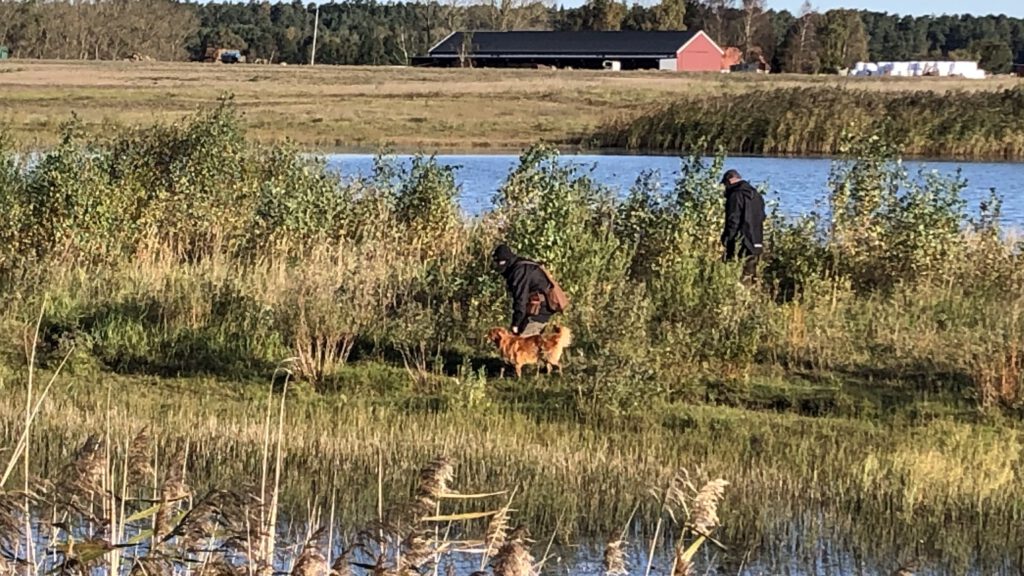
The first tolling tests.
The pioneers importing these first tollers to Scandinavia weren´t hunters, and when tollers the following years became more popular and some owners starting working with theoir dogs they were recognized as retrievers. In Sweden the tollers could enter in retriever tests and a few early pioneers as Ewa Jonsson, Aji Franzén and Lars Finne proved that tollers could reach the highest prize levels in Elite class on retriever tests.
But for many tollers the tests were too rigid and unsuitable, and more owners and breeders started looking at the history and the traditional tolling hunt in Nova Scotia. The Swedish breed club initiated work on regulations for a tolling hunt test, and in 1997 the first inofficial tolling test was organized at Trollebo, Småland.
The tolling tests were built on the official retriever test regulations with an added tolling moment, always arranged with cold game, and with each dog evaluated individually in a test lasting 20 to 30 minutes.
The new test became popular and in 2000 the breed club decided to work for official tolling tests. Discussions between the breed club, the retriever club and the kennel club were tricky, as the goal was to have official tolling tests and still be allowed to enter the hundreds of retriever tests organized all over the country. The breakthrough came in 2005, when two things helped close the discussions. In August, close to hundred tollers started in both tolling and retriever tests at the Swedish breed special (proving the tests held the same levels and showed the desired qualities), and later it was also realized there was a breed, already allowed to enter both official spaniel and retriever tests (even if very few ever did it) – the Irish Water Spaniel.
The road was open, and finally the kennel club decided that from January 2007 the tolling tests were recognized as official in Sweden. (The kennel club unfortunately decided that the first years there was no need for an elite class or championat,)
Official tolling tests.
In May 2007 the first official tolling test was held at Levrasjön, Skåne. Two experienced retriever judges, Erik Björne and Bosse Ferm, evaluated a total of 15 tollers. The historical first dog out was Lauvstuas Wildfox Boogie Woogie, and the first dog to receive a 1st prize was Webley´s Gibli.
Later the same year the first official tolling test in Denmark was also arranged, and the first Swedish dog – Gibli – qualified for Elite class. (During the coming years more Swedish tollers qualified for Elite class, but until 2012 they could only wait for the possibility to start on domestic tests.)
From five tests and 55 entered dogs in 2007, the tolling tests grew year after year, and the last years we´ve seen yearly 400 to 500 tollers starting in 30 to 40 official tests.
When new and revised regulations could be decided in 2012 (as official regulations for all tests and shows are set by the Swedish kennel club for five year periods); the Elite class , the practical tolling test, and the tolling championat was introduced.
2013 saw the very first tolling hunt champion in Sweden, SE J(t)CH Agrosofens Calypso, after three 1st prizes in Elite class and passing the practical tolling test, luring live ducks and retrievering warm game.
In the ten years since then, a total of 28 tollers have gone all the way to the tolling hunt championat – 22 Swedish, 3 German and 3 Norwegian tollers.
Quaragerous Quicksilver vom Lech-Toller Nest became the first Danish tolling hunt champion in 2018, and up til today there are six Danish champions and five tollers that have become double tolling champions.
In 2016 the next country with official tolling tests was Germany – first with Bronze level tests, and later with Silver level.
Norway was the 4th country out in 2019, and in 2022 Belgium and the Netherlands also could arrange official recognized tolling tests.
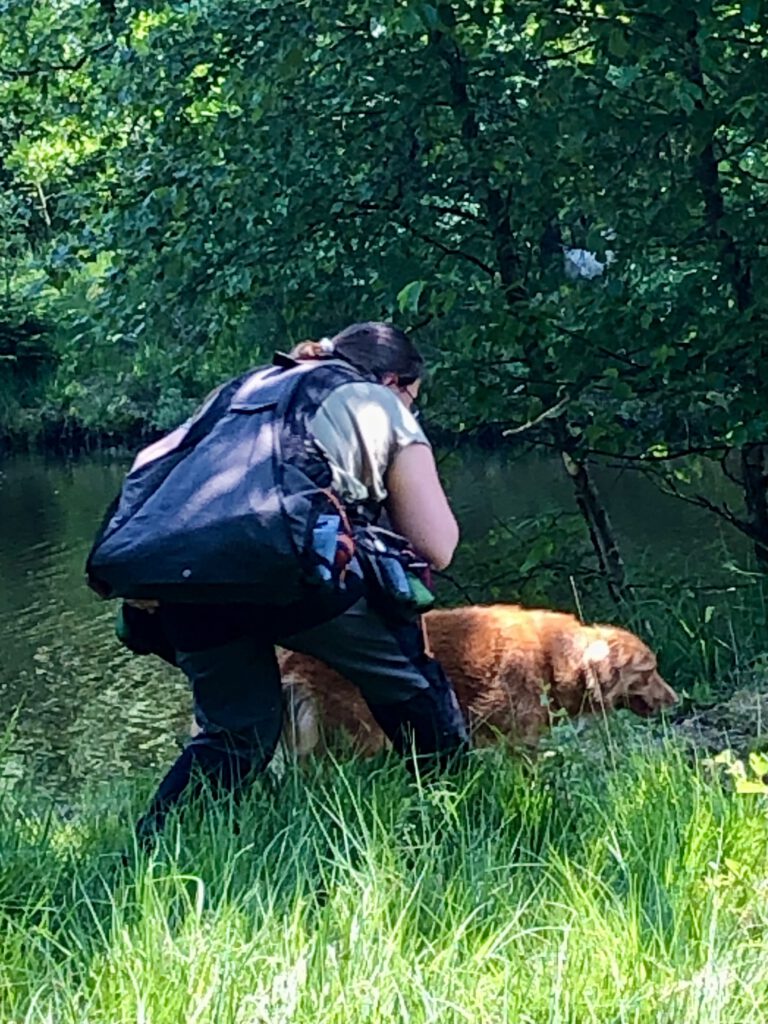
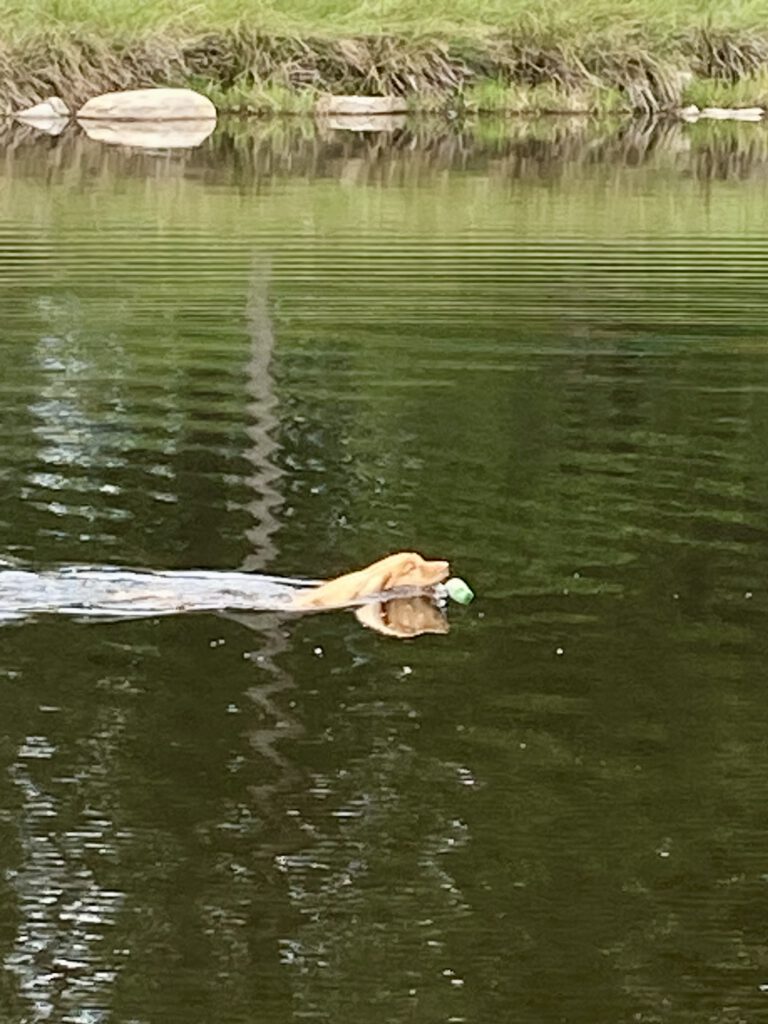
The judges
During the inofficial years there were no regulations, who could be the judge of a tolling test, but this had to change when the tests became official in 2007. The first years the tests were judged by official retriever judges, with a genuine interest in the tollers. Some of them had already judged inofficial tests – Erik Björne, Bosse Ferm, Anita Norrblom, Gunnar Petersson, Lasse Johnson and Leif Gustavsson all contributed to the development of the tolling tests.
In 2010, the first Swedish tolling judge, working with and breeding tollers, Anders Wahlberg, was authorized by the retriever club; and currently there are six authorized Swedish tolling judges from our own ranks – Marie Kinder Nilsson, Titti Karlström, Sverker Haraldsson, Lasse Bengtsson, Håkan Linde & Mats Viker.
Norway, Denmark, Germany and Belgium has followed in the same paths with each country having a couple of their own tolling judges.
Re-creating a hunting breed
The Swedish tolling activity, within the breed club and the retriever club, is the largest by far, with more than xxxx tollers entered and evaluated through the last 15 or so years, with currently 400 to 500 entries and 30 to 40 tests per year. Each year, 40 to 60 new dogs, often with debutant handlers, start in their first tolling test.
- Official hunting tests based on the breed´s unique hunting tradition,
- evaluating the qualities and characteristics inherited in the breed,
- with judges familiar with the breed and the tolling, and
- making the step to enter the first time for a beginner dog or handler undramatic;
- = the result of all this has been a dramatic improvement in the hunting qualities of the breed.
It has also meant a rising interest among breeders to use results from the tests in the breeding. It has meant more and more tollers training together with their handlers for the hunt, more and more tollers used in hunting, and more toller owners becoming hunters.
This has happened the last years.
This would not have happened without the tolling tests.
As one of the most distinguished retriever judges expressed it: “No other retriever or spaniel breed has seen an equally fast improvement in their hunting qualities as the tollers.”
